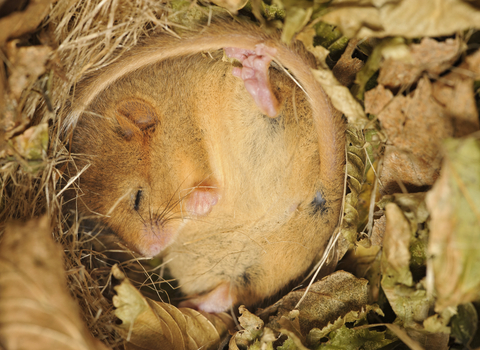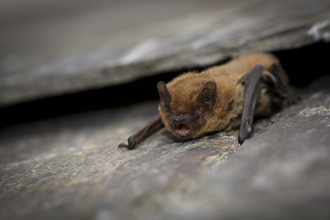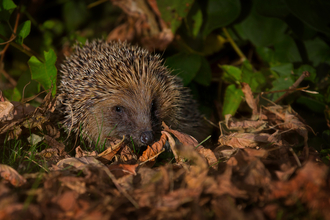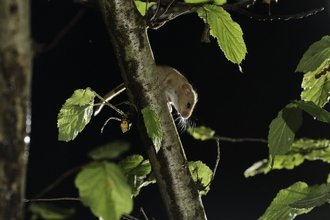Sleep through the winter
A number of our native animals hibernate for the winter, when their food supplies will start to dwindle and the cold weather means expending more energy than in the warmer months.
Across the planet, some wildlife can migrate to warmer climes to avoid the cold of winter and find more reliable food sources...birds are the most obvious migrators, but in North America for example, huge herds of buffalo also travelled hundreds of miles south to better feeding grounds in the Autumn.
Hibernation is a risky strategy for surviving the winter. It involves the slowing of an animal's metabolism to a rate where very little energy is being used...just enough to keep the blood flowing and sustain body heat. An hibernating animal can't just snap out of their winter slumber in an instant, which leaves them susceptible to predation from carnivores. During hibernation, the animal is unconscious throughout the process, but some species occasionally wake up during the winter - particularly if the weather is unseasonably warm or if they have been disturbed. This brief period of activity is usually spent foraging for some extra food and looking for a fresh place to begin the next stage of hibernation.
Hibernation planning
In order to improve the changes of survival, hibernating animals need to start preparing well in advance. For mammals, this means putting on a lot of body weight to ensure they have enough fat reserves to live on for several months.
But all hibernating wildlife also needs to prioritise finding a safe, secure place to hide away undisturbed for a few months. This needs to be a location with a near-constant temperature, even during the coldest weather. Some animals hide away in log piles, protected from the elements, and others bury themselves in piles of rotting vegetation, which actually generates a small amount of heat through the process of decomposing. Caves are often popular hibernation spots, as are tree cavities...and these days, our garden sheds, outbuildings and roof spaces!
Who hibernates?
Mammals
In the UK, only two of our land mammals hibernate - hazel dormice and hedgehogs. Some other species, such as badgers, don't hibernate but are happy to sleep for much longer and spend more time underground when the weather is bad. But all of our native bat species hibernate. Bats require a lot of food and energy to be able to fly around and the insects that provide that energy are in too short a supply during the winter. They will often hibernate in cavities in our houses, so care should be taken to avoid disturbing resident bats as they are unlikely to find any food if they awake from hibernation during spells of very cold weather. However, bats can sometimes venture out on warmer winter days and will take advantage by catching a few moths, which will also become active if the temperature rises enough.
Dormice and hedgehogs can hibernate right through the winter by developing enough brown body fat (fat reserves they can utilize during prolonged periods of sleep), which they build up by eating fat and sugar-rich foods. In some cases, they can increase their own body weight by over 30%. It is usually when they reach optimal body weight that they start to go into hibernation.
Other hibernators
Reptiles and amphibians
Cold-blooded animals are unable to sustain their body temperatures during the winter. In the case of reptiles, hibernation is called brumation and unlike mammals, most reptiles depend on hibernating until the sun begins to provide enough heat for them to become active again. Waking up during a cloudy, freezing cold spell is likely to prove fatal to snakes and lizards.
Amphibians - our toads, frogs and newts - will hibernate in the same spots as reptiles - buried in loose soil, decaying leaf litter and under old logs and fallen trees. Some occasionally opt to hibernate underwater at the bottom on ponds, but this is a risky strategy as rotting plants underwater generate harmful gases which can kill the sleeping animals.
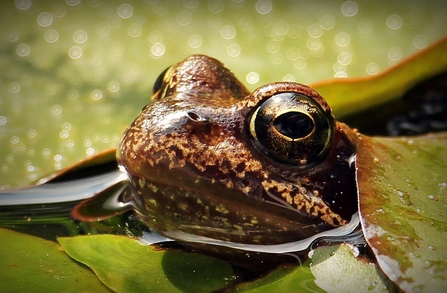
Insects
Different insects have different strategies for hibernating depending on which stage of their development they are at by the arrival of winter. Butterfly caterpillars spend the winter within a chrysalis, which protects them from the cold as they develop into adults. Adult butterflies like Red Admirals hibernate in tree hollows and sheds and wrap themselves in their wings for some protection. Bees usually hibernate in nests underground and gather in numbers to share body warmth, as do ladybirds and wasps.
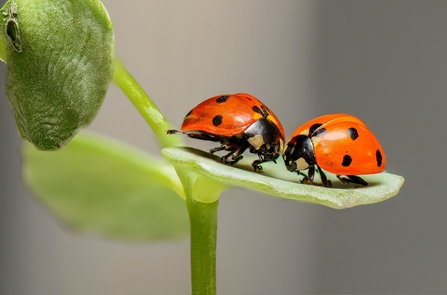
How you can help
All of our hibernating wildlife can be impacted by human activity, but we can also lend them a helping hand.
- If you have space, plant more fruit-bearing shrubs in your garden
- Offer supplementary food to garden visitors during the autumn (avoid leaving out milk-based products, as they are bad for hedgehogs)
- Buy a hedgehog house and tuck it away in the quietest corner of your garden (available from our shop)
- Leave a pile of compost - cut grass and fallen leaves - in a clear patch where it will get some winter sun, for reptiles and amphibians
- Try creating a structured pile of sticks and logs, leaving a few access points for animals to clamber through
Join Shropshire Wildlife Trust
Support our work to protect wildlife

